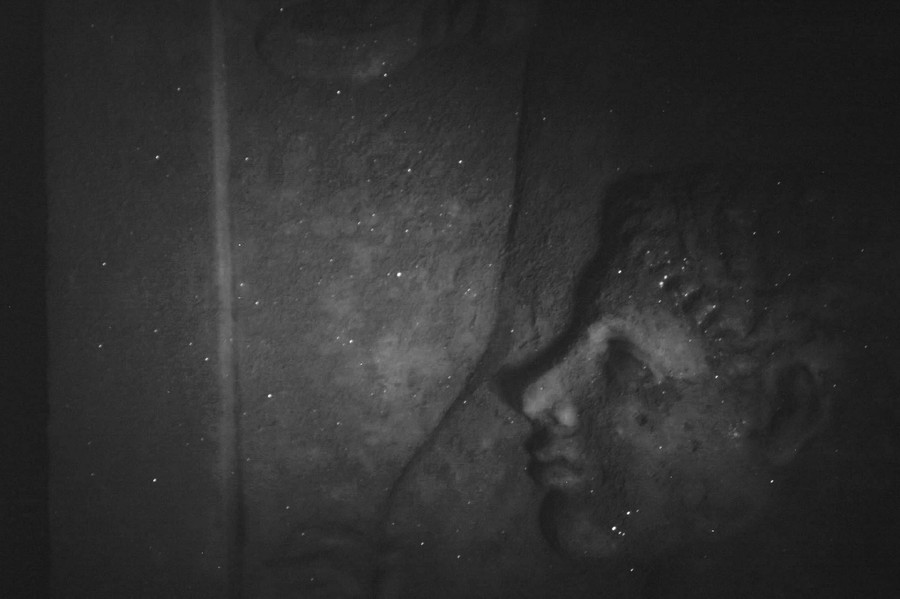Side wall of naiskos
Summary
The naiskos is made of white marble with a crust of calcite. The upper and lower edges are broken. The naiskos has been examined with Visible Induced Luminescence which revealed the use of Egyptian blue in the original colouring of the relief.
Description of object
The upper and lower edges are broken, the sides are framed by pillars, the left hand side finished with the tooth chisel, the right hand side more roughly finished with the tool chisel. In the foreground a curly haired young man stands holding the reins of a horse behind him. The reins were rendered in paint on the background. He wears a belted exomis which leaves the right arm free, and is buttoned on the left shoulder. The horse is being held in tight reins, its chest forming the background for the groom.
Choice of methods
Visual examination
- Macroscopic
Technical imaging
- VIL
Technical imaging
VIL: The naiskos has been examined with Visible Induced Luminescence which revealed the use of Egyptian blue.
Bibliography
F. Poulsen (1951), Catalogue of Ancient Sculpture in the Ny Carlsberg Glyptotek, Copenhagen, cat. no. 229b.
M. Moltesen (1995), Catalogue. Greece in the Classical Period. Ny Carlsberg Glyptotek, Copenhagen, cat. no. 53.
- IN 2807
- Fragment
- c. 320 B.C.E.
- Classical
- White marble
- Bought in 1930.
- H. 88 cm.; W. 57 cm.; D. 15.5 cm.


